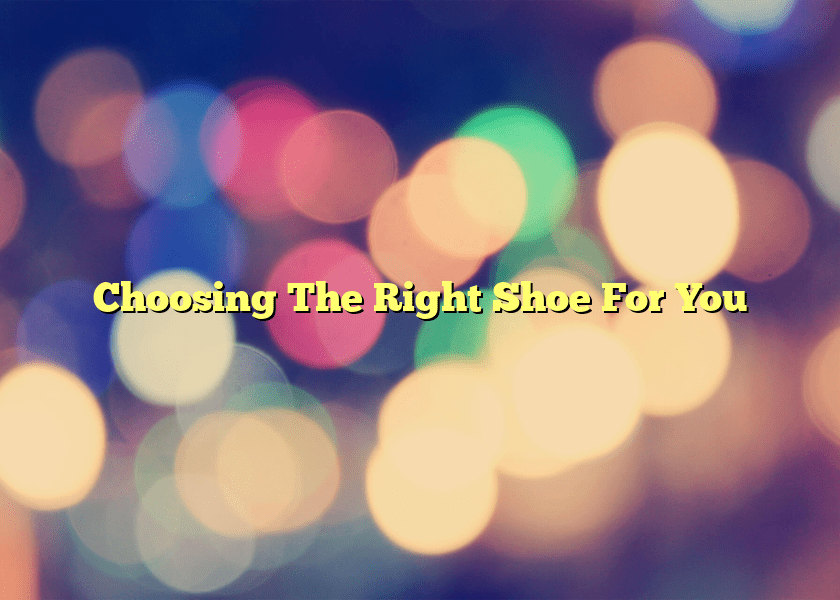Choosing The Right Shoe For You
A Well Known Fact
There is no better feeling than when you are wearing a comfortable shoe. Comfortable shoes allow us to enjoy the day’s activities pain free. Wearing shoes that fit properly can also prevent potential health problems from occurring.
When To Buy
Most shoes can last an average of three to twelve months. As you begin to wear out a shoe, you begin to notice a difference in comfort. Worn out shoes can cause back pain, sore knee joints, or aching feet. The time to replace your shoes is when the cushion has broken down or the motion control has been lost.
Which Shoes To Buy?
Everyone’s foot is different. The best shoe for you is the one that gives you the proper fit, support, cushioning, and flexibility.
Choose a well-cushioned stability shoe that compensates for any irregularities in your foot or your stride.
Some Common Foot Irregularities
High Arched Feet
A high arched foot does not roll inward very much at all. There is a highly curved arch along the inside of the foot. Also, the toes appear to be in a clawed position. Highly arched feet are very rigid and are unable to absorb shock when making contact with the ground. The reason for this is that the foot is not able to roll inward when the foot makes contact with the ground. This lack of pronation can cause heel, knee, shin, and back problems. Inserting special pads in the shoes, which compensate for this condition, treats highly arched feet. The pads allow the feet to absorb shock more easily. People with high arched feet, should try to stay away from stability or motion control shoes, which reduce foot mobility.
Flat Feet
The term “Flat Feet” refers to people who have a low arch, or no arch at all. Sometimes they are said to have “fallen arches”. Most people’s feet have a space on the inner side when the bottom of the foot comes in contact with the ground. This is called the arch. The height of the arch varies in size from one person to another. Flat Feet are generally a hereditary condition. The best shoe for this condition would be a motion control or stability shoe with a firm midsole.
Over or Under Pronation.
Over pronation is the excessive inward rolling motion of the foot. This inward motion is considered unhealthy because it can cause a great deal of strain on the back, ankles, knees, and lower legs. Over pronation can cause shin splints, plantar fasciitis, and IT band syndrome. Under pronation occurs when the outside of the foot takes the brunt of the shock when coming in contact with the ground. This condition can cause problems with the ligaments in your feet and ankles. Stability shoes feature either a dual density midsole or a roll bar to help combat pronation problems.
Some Helpful Shoe Buying Tips
· Shop late in the day. Feet tend to swell as the day goes on. Shoes purchased in the morning will feel tight during by afternoon.
· Shop for shoes with your health and comfort in mind. Your foot size changes every year. Always measure your foot first. This should give you a general range when considering different styles of shoes. Choose shoes that are shaped like your foot.
· Check to see how the sole feels on the bottom of your foot. It should have a soft and supportive cushion. People with high arches generally need more support.
· Stand up and take a quick walk to get a feel for the shoe. Your feet shouldn’t slide around inside and there should be little bit of room beyond the largest toe. But no more than 1/2 inch.
Remember: You should never have to “break in” a tight shoe.
